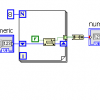Asyncronous invokation of ActiveX instances
-
Similar Content
-
activex MP4 video shows black screen on second run with ActiveX + Windows Media Player
By Cédric Schmitt,
- 1 reply
- 2,402 views
-
- 2 replies
- 1,732 views
-
- 4 replies
- 3,111 views
-
- 2 replies
- 5,825 views
-
- 3 replies
- 3,791 views
-






Recommended Posts
Join the conversation
You can post now and register later. If you have an account, sign in now to post with your account.